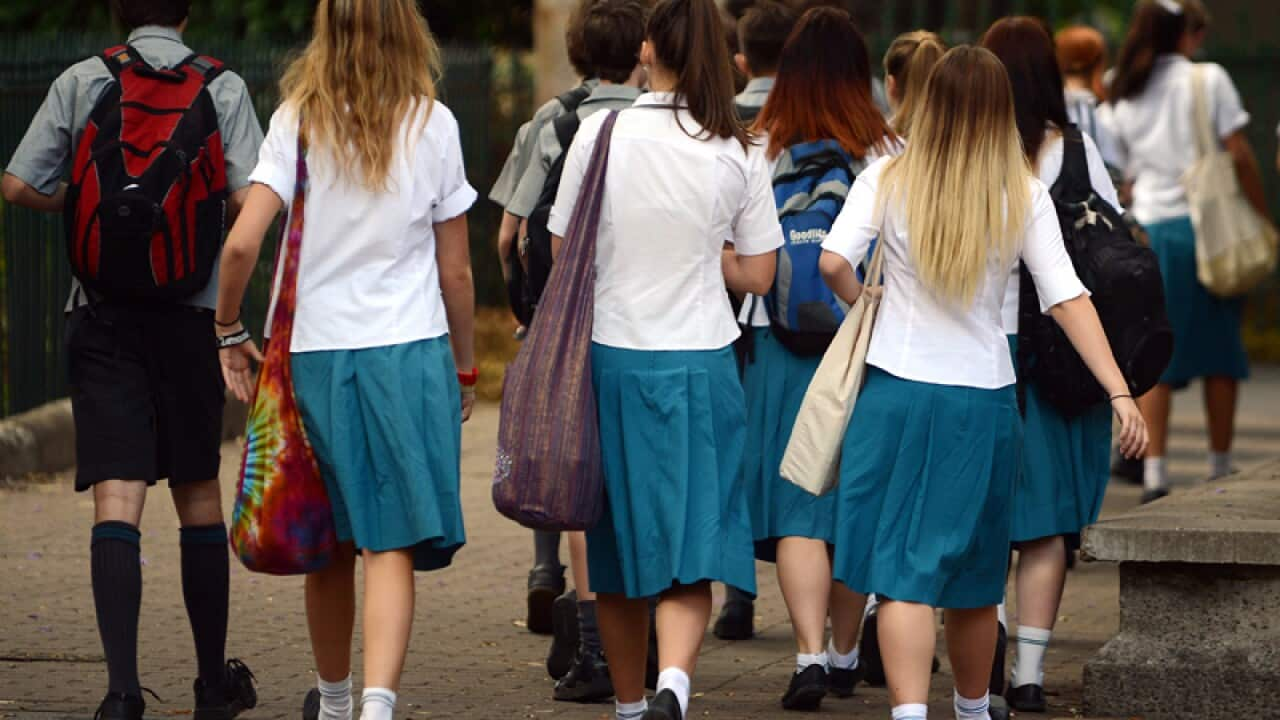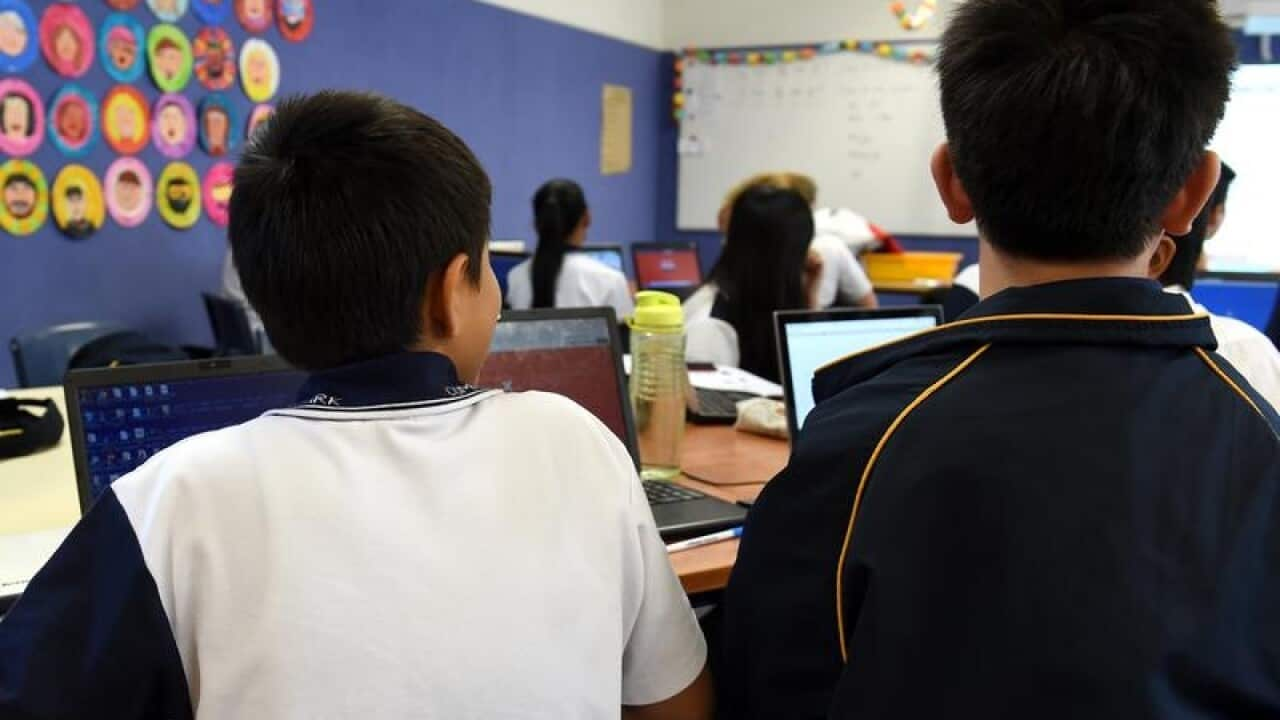A child psychology expert has warned schools against classroom activities which can cause children emotional distress if not enough thought is put into student's individual experiences.
Her warning comes after St Justin's Catholic Primary School in Oran Park, in Sydney’s south west, this week made headlines for their Stolen Generation classroom experiment.
Fourth graders at the end of the day because their parents weren’t looking after them properly. It was an exercise designed to teach them about the Stolen Generation.
Professor of Clinical Psychology and the Director of Deakin Child Study Centre, Nicole Rinehart, told SBS World News she hopes the school factored in any learning disabilities, attachment issues, and really made sure they tailored the lesson to the age of the kids.
“We have to be mindful to that child's experience, if we have children who are experiencing racism themselves, it had to be done in a sensitive way... It’s a pretty risky experiment the school undertook," she said.
While there was initial concern the mock exercise would have left the kids emotionally traumatised, one parent told NITV News the concerned parents were in the minority.
“Ninety-nine per cent of the students and parents understood the lesson and its concept,” the mother who did not want to be identified said.
The school told thethey conducted the experiment last year to great success with no complaints.
According to their statement, the school will "refine" the activity for future classes.
"This was intended to give student's experience of a scenario that was part of our nation's history... [We'll] certainly look at how it can be refined to get the best outcome," the statement said.
Schools have rules to follow
Students aren't the only ones who have rules to follow when they're at school. Teachers have a curriculum of subjects and topics in which they must cover over the school year.
Kathleen Rushton, a lecturer at Sydney University in School of Education and Social Work told SBS World News it’s important for teachers to be teaching students what’s in the syllabus.
“I think we have to teach what is in the syllabus and we have to do it in a way that is inclusive, respectful, and supportive in developing critical thinking in young people and children,” she said.
Rushton also said teaching kids about Aboriginal culture is fulfilling.
“What I find most rewarding, is to bring the voices of Aboriginal people into our classroom, especially through the picture books and novels they’ve been kind enough to share with us (non- Indigenous people).”
Some schools in the United States have stirred up controversy after parents voiced their concerns on the approach to social issues.
King and King
In 2006, parents from the US town of Massachusetts were outraged when their second grade children were read ‘King & King’, a fairy-tale about two homosexual princesses.
The parents said the Esterbrook Elementary School was violating their religious freedom.
One mother she was appalled by the school teaching seven and eight year olds about same-sex relationships.
“It's introducing the concept that if I don't like other girls, then maybe that means that I'm gay. I mean it can introduce confusing ideas to a young, young child,” she said.
Paul Ash, the school district representative, said he left both a legal and moral obligation to teach kids about same-sex couples, especially since gay marriage was legal in Massachusetts.
“I believe my job is to honour the laws of the Commonwealth of Massachusetts, and I don't think we should allow people to say, Well, I believe in equal rights, but we don't believe that that ought to be taught to children.”
'This film is pure propaganda'
In May, students at Tarpon Springs High School, in Florida, were shown an anti-Muslim propaganda film 'Obsession: Radical Islam’s War Against the West' during a history class.
Parents were not informed the film would be shown, district officials said, they do not approve the film being shown and it was not a resource provided by the district to social studies teachers.
The Council on American Islamic Relations said the film should not be shown in schools.
“This film is pure propaganda that is really used to demonise the Muslim religion by a group, the Clarion Project that was designated by the Southern Poverty Law Center as a hate group,” Thania Diaz Clevenger, the Civil Rights Direction with the Council on American-Islamic Relations, .
'Blue Eyes. Brown Eyes'
In 1968, the day after Dr Martin Luther King Jr was assassinated, a small town teacher from Riceville, Iowa taught her third grade class a lesson on racial discrimination.
Jane Elliot had been teaching for 15 years at the time of her 'Blue Eyes, Brown Eyes' classroom experiment.
One day in April, Ms Elliot segregated her Year 3 students by eye colour. Blue-eyed students given special privileges, and brown-eyed students made to wear a material collar around their necks.
To further her experiment, she lied to her students explain that melanin was linked to the higher intelligence of the blue eye students.
“I watched what had been marvellous, cooperative, wonderful, thoughtful children turn into nasty, vicious, discriminating little third graders in the space of 15 minutes,” she said in the 1970 documentary ’.
The following day when students came into class, Ms Elliot said she had lied the day before and that it was actually brown eyed people who were the more superior person and the roles were reversed.
The experiment showed how the effects of being discriminated against affected the students work and their emotions as well.
At the end of the experiment Elliot asked her students if they thought it was okay to judge someone on their eye colour, this later turned into a question of race.
The backlash
The experiment was picked up by the media. Ms Elliot's appearance on ‘The Tonight Show Starring Johnny Carson’ drew hostile audience responses, and she was also outcast by teachers at her school.
“Twenty per cent of the people in Riceville are still absolutely furious about what I did on April 4, 1968. So to this day I’m called a “nigger lover” by 20 per cent of the population in Riceville. I was grateful for the other 80 per cent,” she told in 2003.
Almost 50 years later, the small town American teacher, has travelled the world, using her 'Blue Eyes, Brown Eyes' experiment with adults around the world including a few televised experiments in Australia and Britain.





